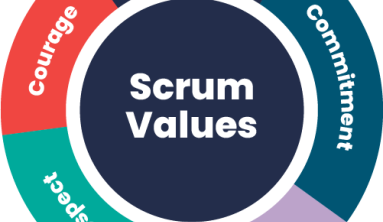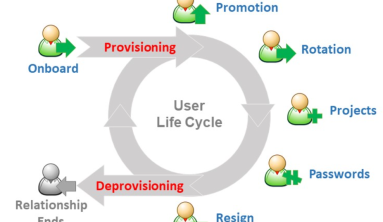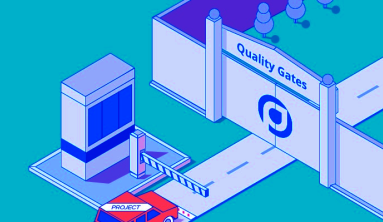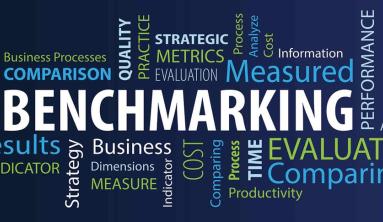As a project manager, knowing what could go wrong during your project can help you set your team members up for success. For example, what if project stakeholders propose a new app and you don’t consider the time and resources it will take to create it? When the app heads to the development team, the project is at risk of falling apart before it starts.
When you know the potential risks for each project, you can create reasonable project objectives and keep the team on track. In the guide below, we’ll outline the seven most common project risks you may encounter when conducting risk assessments.

1. Scope creep
Scope risk, also known as scope creep, occurs when the initial project objectives aren’t well-defined. It’s important to communicate your project roadmap with stakeholders from the beginning and hold firm to those parameters. If you don’t communicate your project scope effectively, stakeholders may try to change requirements mid-project.
How to mitigate scope creep: Creating clear project parameters from the start will strengthen your project scope. Agreeing upon the project scope and communicating that vision with stakeholders from the beginning will leave less room for scope creep. Scheduling regular progress check-ins can also ensure the project stays in line with the original project scope.
2. Low performance
Performance risk occurs when the project doesn’t perform as well as initially expected. While you can’t always identify the root cause of low performance, you can identify project risks that may lead to low performance and look for ways to prevent those risks. Examples of these risks include a time crunch and miscommunication among team members.
How to mitigate low performance: Anticipating potential performance risks early on in the planning process can help you prepare. Using project management software lets you follow your processes in real time, plan your project thoroughly, and promote open communication between team members.
3. High costs
Cost risk occurs when your project goes over the budget you initially set. Cost risk can occur because of unrealistic or lack of detailed budgeting in the project planning phase. For example, you may feel confident that your project will be completed under-budget. However, creating a detailed list of every project element and what they cost can help you anticipate project needs.
How to mitigate high costs: To mitigate cost risk, estimate each element of your project accurately and stick closely to your budget. The best way to stick to your budget is to create a project plan template to align on deliverables, scope, and schedule. When your project goes into development, consider scheduling regular check-ins to review your budget and how you’re pacing.
4. Time crunch
Time risk, also known as project schedule risk, is the risk that tasks in your project will take longer than expected. Delayed timelines might impact other things like your budget, delivery date, or overall performance. This is a common risk that you may run into as project manager. When you’re not doing the work yourself across lots of moving pieces, it’s easy to underestimate the time it’ll take team members to complete a project during the initial planning phase.
How to mitigate a time crunch: To mitigate time risk, a rule of thumb is to overestimate the time needed to complete tasks in the planning phase and build in time contingency. That way, you’ll have wiggle room for scheduling later on. You can also create a project schedule using a Timeline or Gantt chart. Having clarity into work, dependencies between work, and any delays can help project managers dynamically adapt to time risk as it crops up. Understanding your project lifecycle can also help you determine how long each task will take.
5. Stretched resources
Resource risk occurs if you don’t have enough resources to complete the project. Resources may include time, skills, money, or tools. As a project manager, you’re responsible for the procurement of resources for your team and communicating with your team about the status of resources. Resource allocation should happen early in the project planning process, typically 1-2 months before project execution, depending on project size.
How to mitigate stretched resources: The best way to mitigate resource risk is to create a resource allocation plan. A resource allocation plan makes the best use of team resources while maximizing resource impact and supporting team goals. When you know what resources you need from the beginning, you minimize the chance of running out of resources later.
6. Operational changes
Operational risk involves changes in company or team processes, like an unexpected shift in team roles, changes in management, or new processes that your team must adjust to. These things can create distractions, require adjustments in workflows, and may impact project timelines.
How to mitigate operational mishaps: You can’t predict or prevent all operational risks, but if you know a team shift or process change is coming, you can mitigate the effects of the transition. Make sure your team is prepared for the change and has time to adjust through team meetings, scheduling tools, or additional trainings.
7. Lack of clarity
Lack of clarity may come in the form of miscommunication from stakeholders, vague project scopes, or unclear deadlines. The result can be a lack of visibility due to siloed work, going over budget, falling behind project deadlines, changing project requirements, having to pivot project direction, or disappointing project outcomes.
How to mitigate lack of clarity: When planning your project, check and recheck your requirements to ensure everything is in place. Is everyone involved on the same page? Are developers prepared for the next phase? Is the scope clearly defined? It's also important to make sure project information is accessible to all. By keeping information in a central tool, you can ensure everyone stays updated as the project progresses.
How to use risk management to prepare your team
Risk management involves identifying what risk categories are most likely to affect your project and making a plan to mitigate those risks.

Project management tools make risk management easier because they allow you to organize your projects from start to finish. You can also use work management software to collaborate across teams, which will make the most common risks less likely.
Using the following four steps, you can anticipate risk and keep your projects running smoothly.
1. Risk identification
The first step in the risk analysis process is identifying risks you think could affect your project. We mentioned the seven most common risk events above, but other project risks could include contractor failure, unexpected life events, data transfer issues, shifting priorities, legal risk, market risk, and project deferral.
Ask yourself these questions below to begin the risk identification process:
-
What is the likelihood of this risk event?
-
What are the impact and severity if the risk occurs?
-
What is our risk response plan?
-
Given the likelihood and impact, what is the priority level?
-
Who owns this risk?
Once you have an answer to these questions, you’ll continue the risk management process through prioritization of risks, actionable solutions, and regular monitoring.
2. Determine the likelihood and impact
You can sort through your list of risks by determining which ones are most likely to occur. Placing the risks in order of likelihood will give you a better idea of which risks to prioritize as you prepare a plan of action.
Not only is the likelihood of occurrence important when prioritizing risks, but assessing the business impact of each risk matters as well. You should plan more carefully for the risks that have the potential to cause significant business impact.
3. Find solutions for each risk
Creating a game plan on how your team will deal with each risk is the goal when conducting risk assessments. Sorting risks based on likelihood and business impact will give you a starting point for finding solutions. Conducting a risk assessment will make your projects more successful because you can prevent risk along the way.
You can meet with relevant project stakeholders to proactively identify reasonable solutions for project risks that might be top of mind for them. Take a look at lessons learned from past projects to gauge how risks were handled.
4. Monitor your risk assessment regularly
Once you’ve developed your risk assessment, it’s important to monitor it regularly because circumstances can change. The likelihood of risk can shift and so can the business impact.
It’s also possible that new risks can come into play or risks that were once possible may become less likely. Monitoring your risk assessment regularly can make you feel the most prepared for uncertain events.
Project risk management tools
The right tools can make the risk assessment process easier because they allow you to analyze and prioritize risk. With real-time tracking and shared information in one place, everyone on your team can have instant access to project materials and you can monitor team progress.
Project management tools can also help your team develop strong project planning skills. Knowing your process and the project management phases can prevent risks before they occur.
Risk register
A risk register is the ultimate tool for identifying and prioritizing risk. A risk register should include the likelihood of each risk, the business impact, how you hope to prevent the risk, how you plan to respond to the risk if it occurs, and who will take action.
Below is an example of what a risk register might look like. The left side shows the type of risk followed by the likelihood of the risk, the level of business impact, the person responsible for taking action, and the mitigating action.

After completing a risk register, you’ll have a living document to use when working through projects. You can reference this information as you encounter risks and use it to reduce long-term damage.
SWOT analysis
SWOT stands for strengths, weaknesses, opportunities, and threats. A SWOT analysis goes beyond identifying the risks for a project because it also identifies the strong points in your project. You can use your project’s strong points to stand out among competitors.
To complete a SWOT analysis, go through each letter of the acronym and ask questions like the ones below to uncover new ways to improve your project and prepare your team.
Strength: What do we do well?
Weakness: What could be improved?
Opportunity: What are our goals for the year?
Threat: Where are our competitors outperforming us?
After creating a SWOT analysis, you can feel confident moving forward with projects because you’ll have a better understanding of where you stand in relation to competitors. You’ll also know your strengths and weaknesses, which can help you improve future projects and mitigate risk.
Brainstorming
Brainstorming is a powerful way to come up with ideas, but its effectiveness can often get overlooked. When you have a team with different perspectives, brainstorming is a great way to spark creativity and assess risk.
Brainstorming is often the first step in creating a risk register because to identify risk, you must start somewhere. Learning new brainstorming techniques can help your team identify risk, keep your team agile, and potentially prevent risk from occurring.
Plan ahead to mitigate project risk
The project planning phase is the most important part of any project. You may think that the development phase is where the magic happens, but planning for your project is what prevents project risks and leads your team to success.
There are various types of project management software out there that allow you to automate processes, streamline communication, share information, and provide real-time tracking. With these tools in tow, you can transform your projects from good to great.
Source: asana






